Ancient civilizations have left us with incredible sites that still fascinate us today.
Among them are places whose names start with “O” – often overlooked but full of history.
This article will explore 12 archaeological sites, revealing their stories and cultural importance.
We’ll visit the impressive Olmec heads in Mexico, wander through ancient Oaxaca, and admire the architecture of Oplontis in Italy.
Join us and explore these unique and lesser-known wonders.
12 Enchanting Sites That Begin with O
1. Olympia (Greece)
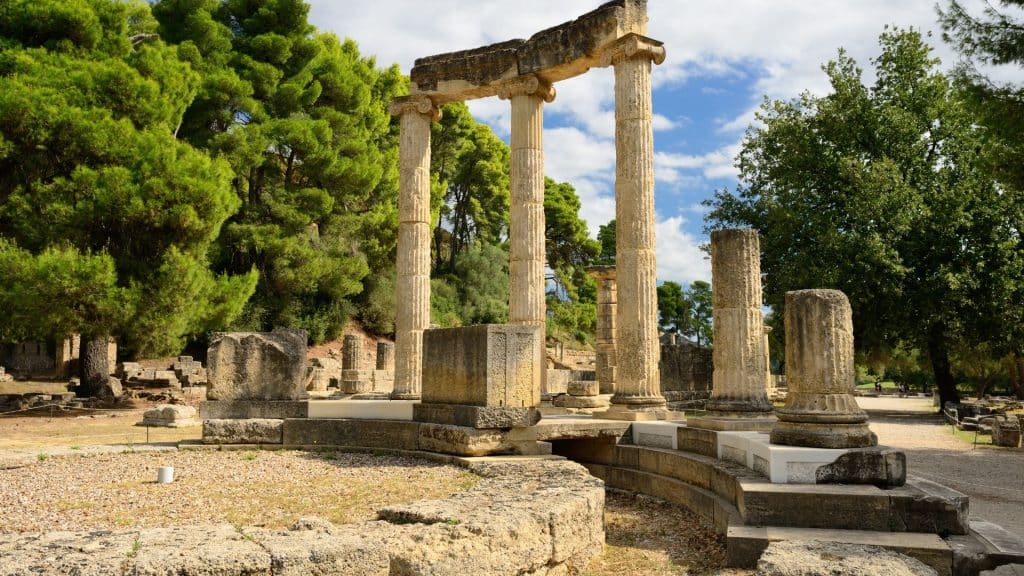
Nestled in western Peloponnese, Olympia symbolizes ancient Greek culture and athleticism.
This sacred site, dedicated to Zeus, is famous as the birthplace of the Olympic Games and a center of Greek unity and religious devotion.
The Temple of Zeus, once home to a colossal statue of Zeus by the sculptor Phidias, was one of the Seven Wonders of the Ancient World.
Nearby, the ancient stadium, which could hold 45,000 spectators, still has stone grooves where athletes start their races.
The Olympic Games, held every four years, brought together athletes from all over Greece, promoting a sense of shared identity and peace.
Winners were celebrated with statues and poems, bringing honor to their cities.
Other important structures include the Philippeion, a circular monument by Philip II of Macedon; the Heraion, an early temple dedicated to Hera; and the Prytaneion, where victorious athletes were honored with feasts.
Olympia’s legacy lives on, as the Olympic flame is still lit here for the modern Games, connecting past and present.
Visiting Olympia lets you walk in the footsteps of ancient athletes and feel the enduring spirit of this historic site.
2. Ostia Antica (Italy)
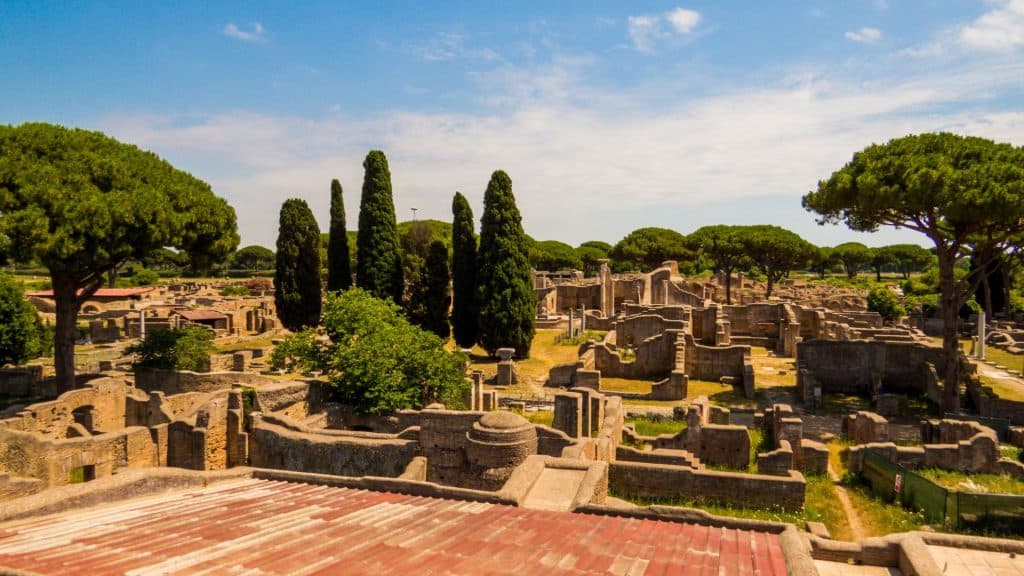
At the mouth of the Tiber River lies Ostia Antica, an ancient Roman port city that served as the gateway to Rome.
Founded in the 4th century BC, this archaeological site offers a glimpse into the daily life of a thriving Roman commercial hub.
Wander through the well-preserved streets and find the Forum, the city’s center. The Capitolium stands tall as a symbol of religious and political importance.
Nearby, the grand theater, which seated 4,000 spectators, still echoes with past applause.
The Baths of Neptune and Forum Baths showcase stunning mosaics and highlight the importance of public bathing in Roman culture.
Explore the remains of apartment buildings (insulae), shops (tabernae), and the bustling Macellum marketplace to discover the daily lives of Ostia’s inhabitants.
Ostia Antica’s ruins provide insights into Roman urban planning and commerce.
From the Guild Hall of the Grain Measurers to countless temples and shrines, every corner of this city tells the story of a vibrant community crucial to the Roman Empire.
3. Ollantaytambo (Peru)

Nestled in Peru’s Sacred Valley, Ollantaytambo showcases Inca ingenuity and resilience.
Built under Emperor Pachacuti in the 15th century, it highlights Inca urban planning and engineering.
The site’s terraces are an agricultural marvel, preventing erosion and creating microclimates for diverse crops.
At its heart, the Temple of the Sun features massive stone blocks fitted with incredible precision, demonstrating the Incas’ architectural skill.
Strategically located at the confluence of two rivers, Ollantaytambo was a fortress.
This proved crucial during the 1536 Battle of Ollantaytambo, where Inca forces repelled Spanish invaders.
Its network of roads and storehouses underscores its importance as an administrative and military center.
Today, Ollantaytambo blends past and present, with modern residents maintaining traditional practices amidst ancient structures.
Exploring this site offers a firsthand experience of the Inca legacy.
4. Oplontis (Italy)
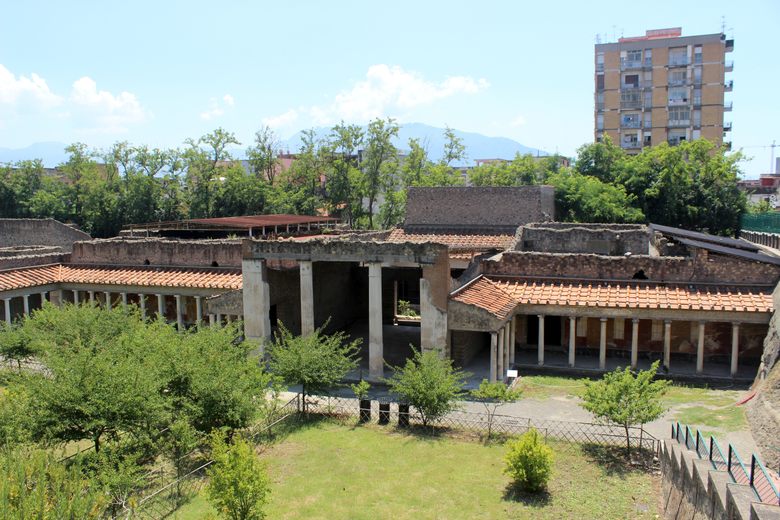
Nestled near Pompeii in Torre Annunziata, Oplontis offers a glimpse into the opulent lifestyle of ancient Roman elites.
This UNESCO World Heritage site is renowned for the Villa of Poppaea, believed to have belonged to Emperor Nero’s second wife.
The villa’s vibrant frescoes depict mythological scenes, nature, and daily life, showcasing Roman artistry.
As you explore the spacious rooms, atriums, and peristyles, you’ll marvel at the blend of indoor and outdoor spaces.
Oplontis features luxurious amenities, including private baths and meticulously designed gardens with fountains and statues, reflecting the sophisticated lifestyle of Rome’s upper class.
Mount Vesuvius’s eruption in 79 AD buried Oplontis, preserving it as a time capsule of Roman life.
Ongoing archaeological work continues to uncover new findings, enhancing our understanding of this civilization.
Easily accessible from Naples, Oplontis allows visitors to step back in time and experience the grandeur of ancient Roman domestic life firsthand.
5. Orchha (India)
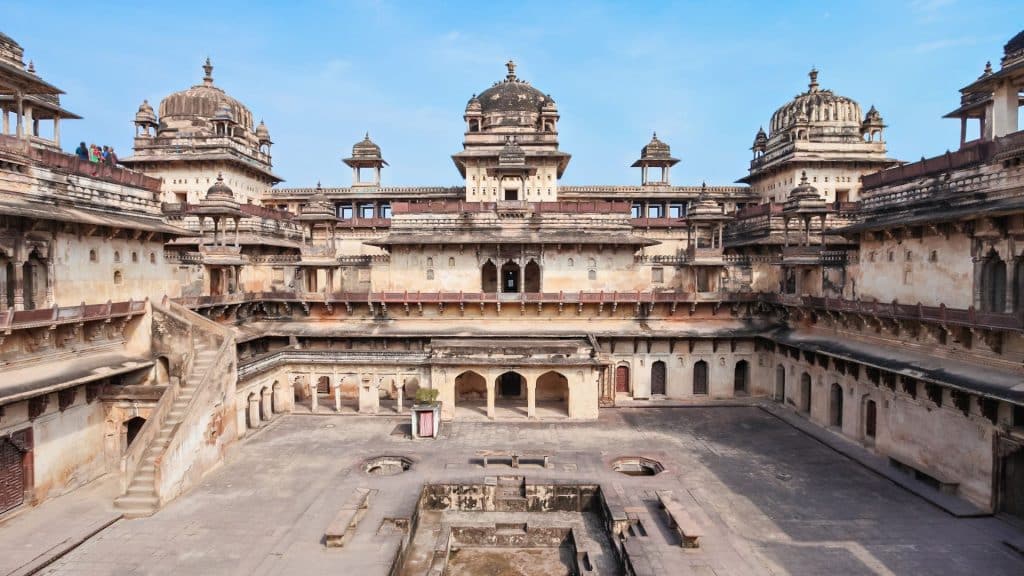
Orchha is a medieval town located in the heart of Madhya Pradesh, India. It is a medieval gem that transports visitors back to the 16th century.
Founded by Bundela Rajput chief Rudra Pratap Singh, this enchanting town showcases a remarkable blend of Rajput and Mughal architectural styles.
At the heart of Orchha lies its magnificent fort complex, featuring the ornate Jahangir Mahal, the beautifully muraled Raja Mahal, and the luxurious Sheesh Mahal.
The Chaturbhuj Temple stands tall, its unique design combining temple and fort elements, while the Ram Raja Temple offers a rare sight of Lord Rama worshipped as a king.
Orchha’s well-preserved monuments testify to medieval India’s artistic and engineering prowess.
The town’s layout and intricate details in its structures provide invaluable insights into the religious beliefs, daily life, and artistic expressions of the era.
Today, Orchha continues to captivate visitors with its serene environment along the Betwa River.
As you explore this living museum, you’ll experience the grandeur of India’s rich cultural heritage, making Orchha a must-visit destination for history enthusiasts and architecture lovers alike.
6. Oban (Scotland)
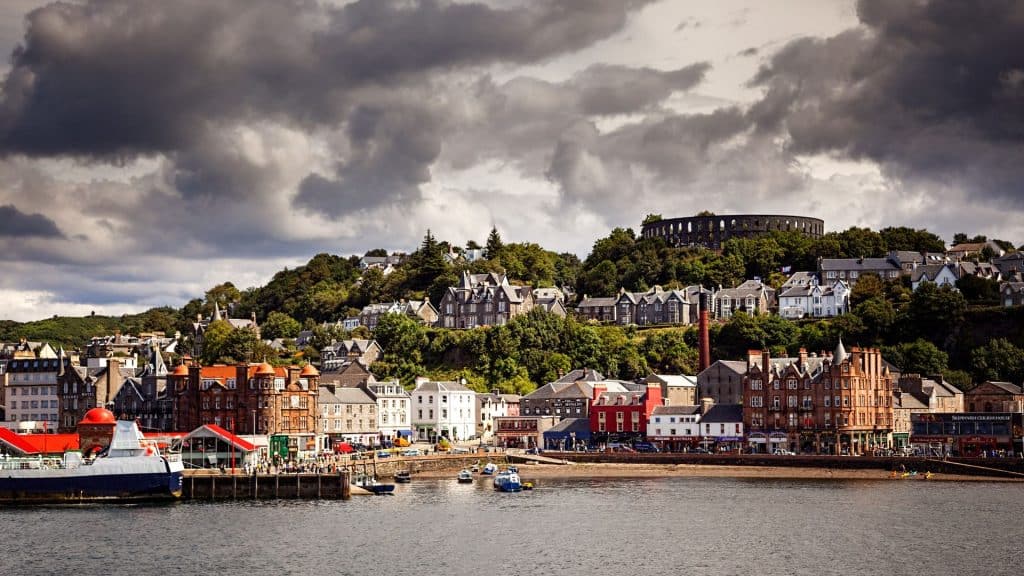
Oban is a small town on Scotland’s west coast. It is charming and has a history as deep as its picturesque harbor.
This “Gateway to the Isles” has been a vital hub for trade and travel since ancient times, its strategic location shaping its significance through the ages.
Oban’s surrounding area is rich in archaeological treasures. The medieval Dunollie Castle, built on Bronze Age foundations, is a testament to the region’s long-standing importance.
Nearby, Dunstaffnage Castle, one of Scotland’s oldest stone fortresses, whispers tales of the Wars of Scottish Independence.
The region’s ancient past comes alive in sites like Kilmartin Glen, where standing stones and burial cairns offer glimpses into Neolithic and Bronze Age life.
Oban’s natural harbor has long been its lifeblood, fostering trade and cultural exchange between the mainland and the Hebrides.
Today, this historic port town continues to enchant visitors with its blend of coastal beauty, rich heritage, and vibrant culture.
7. Oxyrhynchus (Egypt)
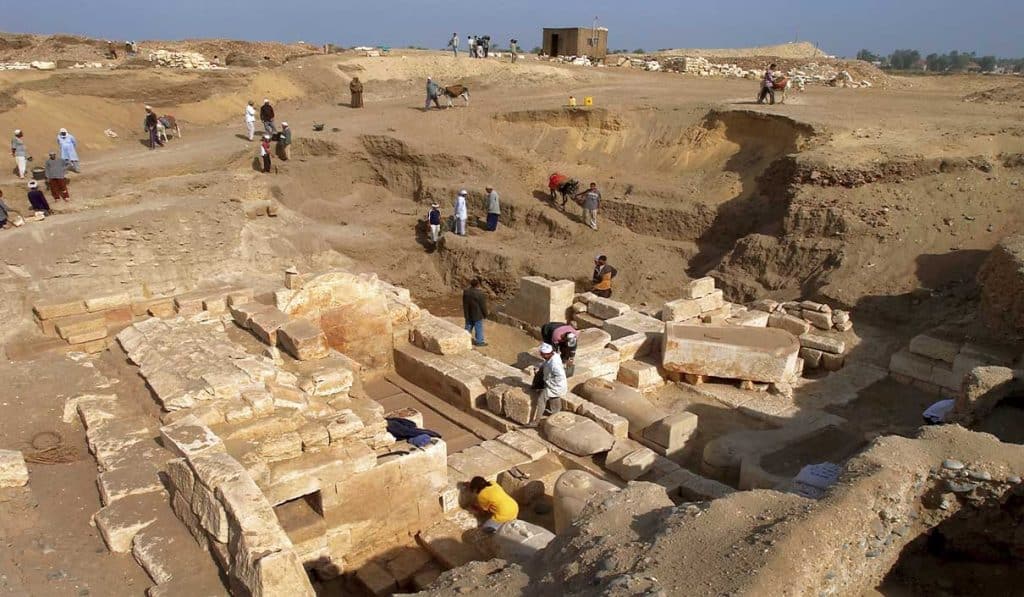
Oxyrhynchus was an ancient city in Upper Egypt. Today, it is known as El-Bahnasa, and it holds a treasure trove of historical significance.
Named after the sacred sharp-snouted fish, this once-thriving metropolis flourished under Greek and Roman rule, serving as a vital cultural and administrative hub.
Oxyrhynchus gained worldwide fame by discovering the Oxyrhynchus Papyri, an unparalleled collection of ancient manuscripts unearthed from the city’s rubbish dumps.
These papyri, uncovered by archaeologists Bernard Grenfell and Arthur Hunt, offer a fascinating window into daily life in Hellenistic and Roman Egypt.
From lost classical literature to early Christian texts and mundane administrative records, these documents provide invaluable insights into the multicultural fabric of ancient society.
Excavations have revealed the city’s intricate urban layout, with public baths, theaters, and marketplaces.
Temples dedicated to Egyptian and Greco-Roman deities underscore the religious diversity that characterized Oxyrhynchus.
The artifacts discovered here continue to shape our understanding of the complex interplay between Greek, Roman, and Egyptian cultures.
While not as renowned as some Egyptian sites, Oxyrhynchus offers history enthusiasts a unique glimpse into the everyday life of an ancient city.
As ongoing research uncovers new information from the papyri, this enchanting site continues to rewrite our understanding of the ancient world.
8. Otrar (Kazakhstan)
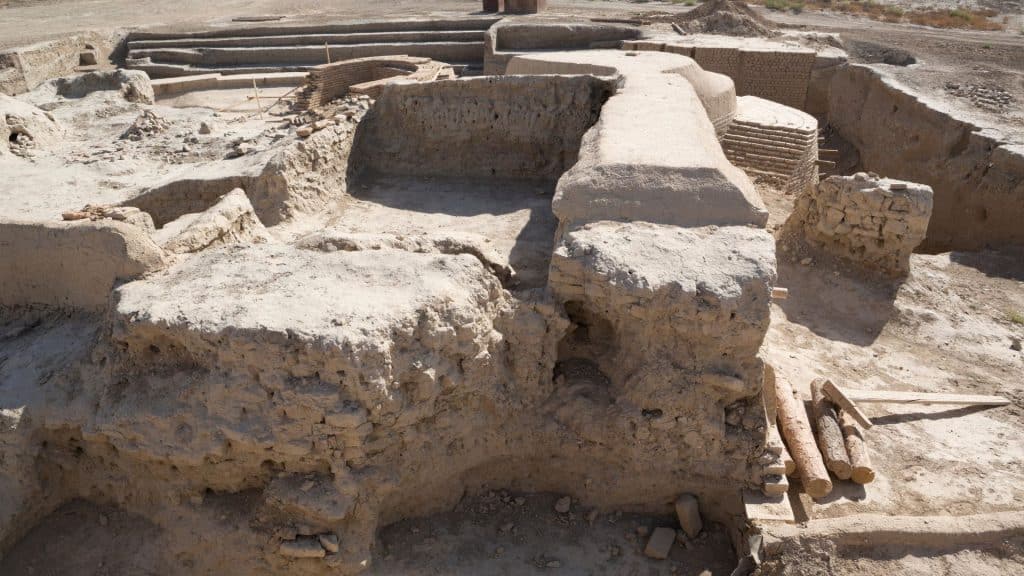
Otrar is an ancient city in southern Kazakhstan that stands as a testament to the vibrant trade and cultural exchange along the Silk Road.
Known as Farab in medieval times, this once-thriving metropolis was pivotal in connecting East and West, fostering scholarship and commerce.
Otrar’s history dramatically turned in 1218 with the infamous “Otrar Incident.”
The city’s governor, suspecting spies in a caravan sent by Genghis Khan, executed the traders.
This aggression provoked the Mongol leader to launch a devastating campaign against the Khwarezmian Empire, forever altering the course of Central Asian history.
Today, the ruins of Otrar sprawl across a vast area, offering glimpses into its former glory.
Excavations have revealed a fortified citadel, intricate mosques, educational institutions, and bustling caravanserais.
These structures and discovered artifacts, such as pottery, coins, and manuscripts.
Ongoing archaeological efforts continue to unearth new findings, enhancing our understanding of Otrar’s significance.
As you explore these ancient ruins, you’ll walk in the footsteps of countless traders, scholars, and travelers who once called this remarkable city home, experiencing firsthand the enduring legacy of the Silk Road.
9. Orvieto (Italy)
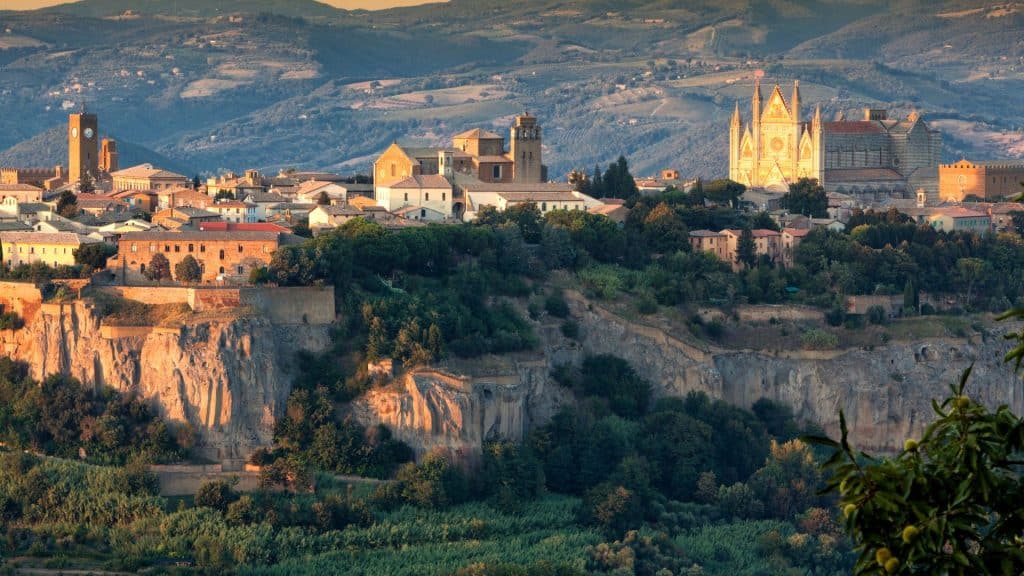
Perched atop a volcanic cliff in Italy’s Umbria region, Orvieto blends Etruscan mystery with medieval grandeur.
Once known as Velzna, it was a key Etruscan city before becoming a powerful medieval city-state. Orvieto’s skyline is dominated by its magnificent Gothic cathedral.
The Duomo’s intricate facade, with mosaics and sculptures, captivates visitors, while inside, Luca Signorelli’s frescoes in the Chapel of San Brizio showcase Renaissance artistry.
Beneath the city lies a vast network of Etruscan-era tunnels and caves, expanded over centuries.
Nearby, St. Patrick’s Well, with its double-helix staircase, is a marvel of Renaissance engineering.
Orvieto’s rich history as an Etruscan stronghold, medieval papal refuge, and center of art is evident everywhere.
From its strategic clifftop location to its cultural treasures, Orvieto offers a journey through over two millennia of Italian history and art.
10. Oaxaca (Mexico)
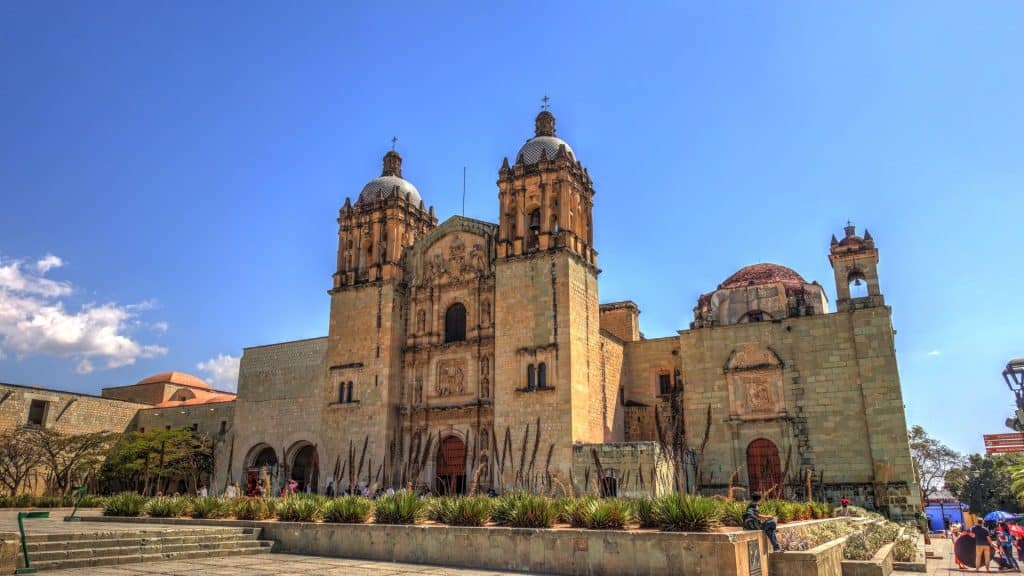
Nestled in southern Mexico, Oaxaca is a vibrant blend of Mesoamerican history, colonial charm, and modern energy.
Once the heartland of the Zapotec civilization, Oaxaca still pulses with indigenous heritage.
Monte Albán, a city founded around 500 BC and perched atop a mountain, showcases the Zapotecs’ architectural and astronomical skills.
Its grand plaza, ball court, and observatory offer glimpses into a sophisticated urban center.
Mitla, the “Place of the Dead,” is adorned with intricate geometric mosaics reflecting Zapotec and Mixtec artistry.
The Hall of Columns and the Group of the Church tell tales of ancient ceremonies and spirituality.
Oaxaca City is alive with indigenous traditions and colonial influences. Its vibrant markets, colorful festivals like Guelaguetza, and world-renowned cuisine attract visitors worldwide.
As you explore Oaxaca’s streets and ancient ruins, you’ll be immersed in a living museum where past and present celebrate Mexico’s rich cultural heritage.
11. Oviedo (Spain)
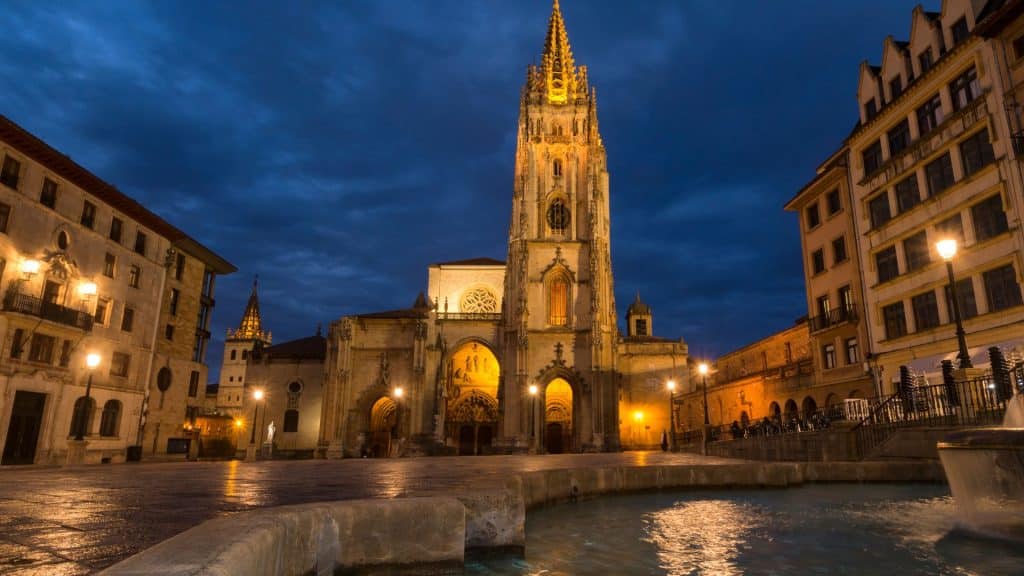
Nestled in the heart of Asturias in northern Spain, Oviedo stands as a living testament to the early days of Christian Spain.
Founded in 761 AD by monks Máximo and Fromestano, this city quickly became the capital of the Kingdom of Asturias.
It played a pivotal role in the Reconquista and shaped the cultural landscape of medieval Iberia.
At the heart of Oviedo lies its magnificent cathedral, the Sancta Ovetensis.
This Gothic masterpiece houses the Holy Chamber, a pre-Romanesque chapel and UNESCO World Heritage site, safeguarding precious relics like the Cross of the Angels.
The cathedral’s twin towers and ornate facade symbolize Oviedo’s religious significance.
Scattered throughout the city are jewels of pre-Romanesque architecture, such as Santa María del Naranco and San Miguel de Lillo.
These 9th-century structures, originally part of a royal palace complex, showcase the unique Asturian style that influenced medieval architecture across Spain.
Nearby, the ancient fountain of La Foncalada offers a rare glimpse into early medieval civil engineering.
As you wander its streets, you’ll experience firsthand the enduring legacy of this remarkable Spanish city, which has been layered with history from the early Christian kingdom to the present day.
12. Opis (Iraq)
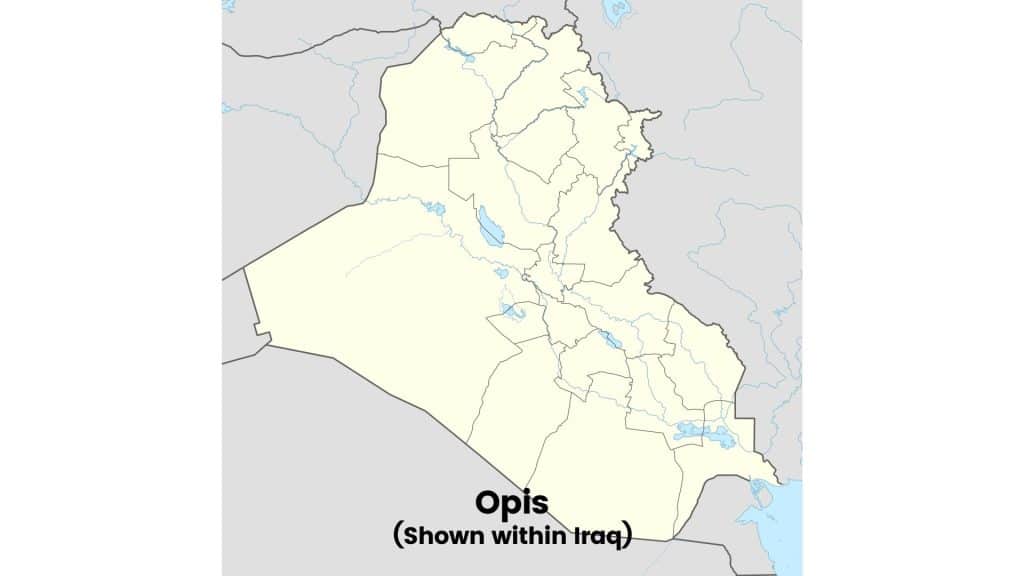
Along the banks of the Tigris River in ancient Mesopotamia, Opis stands as a testament to the grandeur of ancient empires.
This strategic city, located in present-day Iraq, played a pivotal role in the political and economic landscapes of both the Neo-Assyrian and Neo-Babylonian empires.
Opis’s significance as a commercial hub was unparalleled, thanks to its prime location at the crossroads of major trade routes.
The city served as a vital administrative center, managing the flow of tribute and taxes that sustained the mighty Assyrian Empire.
Later, under Babylonian rule, King Nebuchadnezzar II enhanced its fortifications, underlining the city’s enduring importance.
Perhaps Opis’s most defining moment came in 539 BC when it witnessed a battle that would alter the course of history.
Here, Cyrus the Great of Persia triumphed over the Babylonian king Nabonidus, ushering in the era of Persian dominance in Mesopotamia.
From its well-planned streets and imposing fortifications to the wealth of artifacts and cuneiform tablets, each discovery offers invaluable insights into ancient Mesopotamia’s daily life, administration, and cultural practices.
As you explore this ancient city, you’ll walk in the footsteps of mighty kings and everyday citizens, experiencing firsthand the legacy of one of history’s most influential civilizations.
Conclusion
Exploring these 12 mesmerizing sites beginning with “O,” we’ve discovered a rich history and remarkable achievements.
From the Olympic grounds in Greece to Orvieto’s underground tunnels, each site offers a unique glimpse into our shared past.
These places showcase the skill and creativity of ancient civilizations and remind us of the ever-lasting human spirit that connects us through time and cultures.
What’s next for you, explorer? Plan a visit to one of these remarkable places.
Whether you’re interested in the Zapotec ruins of Oaxaca or the medieval charm of Oviedo, each destination promises an unforgettable journey through time.
Let’s keep the spirit of discovery alive!
